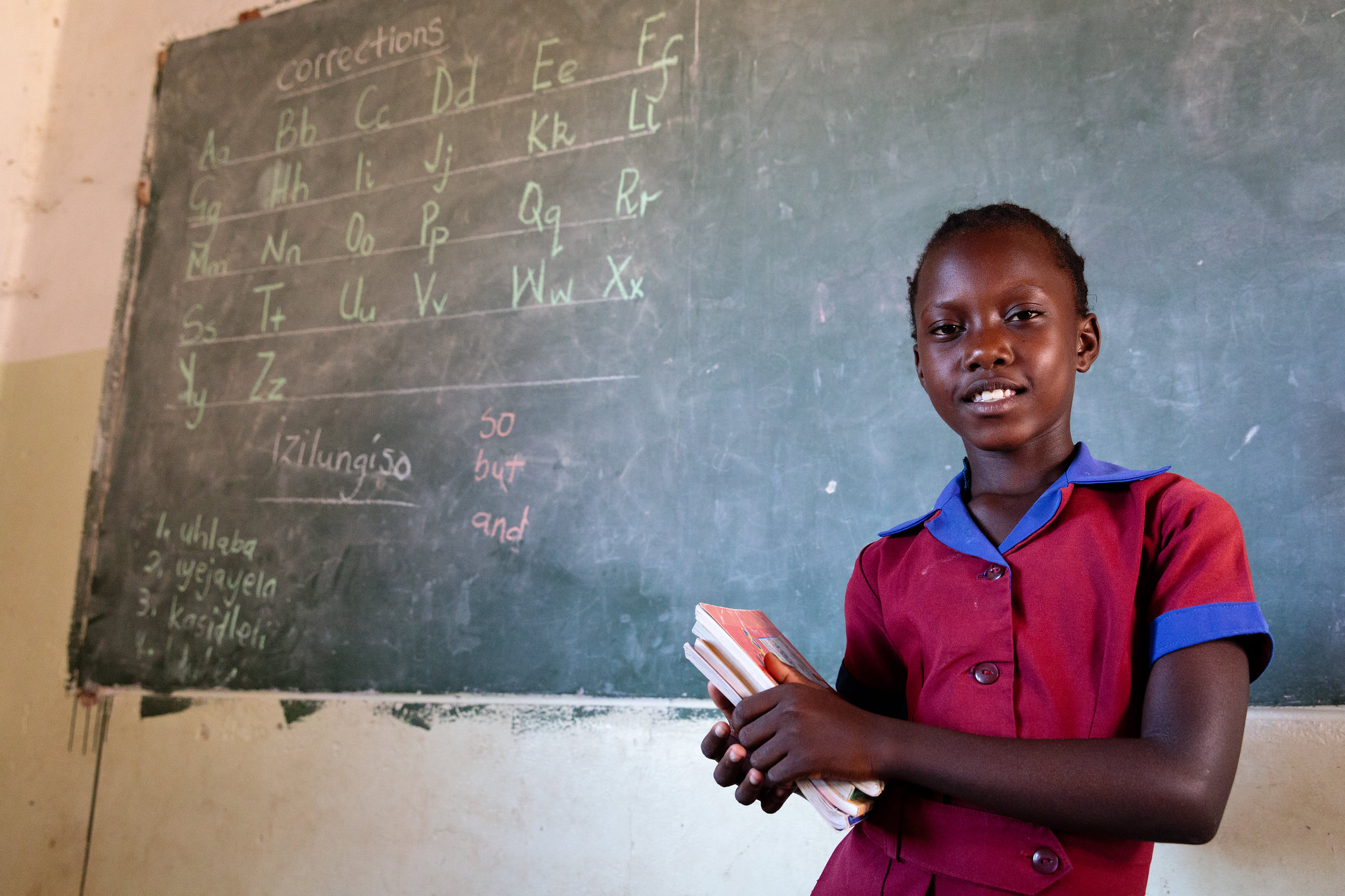Solidarity

Before the pipe was installed, Thandolwayo would miss school because she had to walk over 5 km a day to collect water. Now she is able to spend more time at school, and hopes to become a nurse. Photo: Richard Wainwright/Caritas Australia.
Teacher introduction
By the end of this unit students will have learnt about the ways we are globally connected, explored Jesus’ commitment to service and justice, investigated leadership lessons from Scripture and demonstrated on ways of acting justly.
Teachers, before you start:
- Watch the CST ‘Solidarity’ film and familiarise yourself with the Lower Primary cartoon (found within the Learning Experience below).
- Download the various resources referenced at the bottom of this page (worksheets, slides, etc.) and have them ready to go on your computer/interactive whiteboard.
- Locate any Scriptures and copies of Church texts (all hyperlinked within the Learning Experience below).
- Familiarise and decide on the use of online or app technologies.

Learn - Focus
Teacher’s Note: The Big Question for this Learning Experience may need to be rephrased for lower primary students. For example: ‘How are we part of a global family?’, ‘How are we all connected?’
Students explore our global interconnectedness.
Tune into students' global interconnectedness.
Play the ‘Globally connected’ game - throw an inflatable globe to different students. They share where their family is from, what kind of foods they eat at home or any celebrations. Draw out similarities between students.
Celebrate how wonderful it is that God has made us all, that we are all equally loved and special, no matter how different we are! You might track this on an interactive map such as this one from National Geographic, marking where people are from.
Teacher's Notes: The Catholic Social Teaching principle of (Global) Solidarity is explored through the concept of multiculturalism. Caritas Australia’s works is founded on the principle that everyone belongs to one human family, regardless of their national, religious, ethnic, economic, political and ideological differences. Everyone has an obligation to promote the rights and development of all peoples across communities, nations, and the world, irrespective of national boundaries.
This may also be a good opportunity to further explore cultures represented both in the class, school and wider community. For example, a ‘Global Village’ school festival could be held, where students come dressed in traditional dress, share cuisine and demonstrate traditional music, art or dance. Alternatively, this teaching sequence could expand on already existing cross cultural celebrations in the school with some other ideas: Draw a large world map on the basketball court and have students stand on the area that represents their family's origin. The photo could be taken from a high vantage point and displayed around the school. Students could teach each other encouraging phrases or songs in different languages.

Learn - Explore
Students consider similarities and differences of children living in other parts of the world.
Explain that we are all God’s children, making us all brothers and sisters. Even though we can be very different from another, we are all part of God’s family. Everyone in the classroom, in the school, in Australia and the world! Despite being far away from people in different countries around the world, there is much that is the same, and lots of great things that are also different!
Watch the following short videos depicting a day in the life of children in Cambodia and Mozambique:
Students think about their own daily experiences. Compare and contrast by discussing: What are some things that are the same? What are some things that are different?

Learn - Demonstrate
Students understand that we are global neighbours and that the Lord asks to “love our neighbour”.
Display the Solidarity Lower Primary cartoon vignette and read the titles.

Discuss: Why do you think the people in the cartoon are holding hands? What do the people in the cartoon look like? Does anyone wear some similar clothing in the class? What does it mean that we should try and make life better? Has anyone in the class travelled to a different country? Do you have anything that was made in a different country? Did anyone have a special lunch from a different ethnic cuisine?

Act
Discuss: How does Jesus teach us to live with one another as a big global family?
Review the story of the Good Samaritan
Discuss: What does this tell us? Who is our neighbour?
Construct a Y chart to show what this parable would have looked like, feel like and sound like for the Good Samaritan or the man in need.
Alternatively, or for older students: Students write a short letter to the Good Samaritan, encouraging him for his behaviour and outlining why they think it was so good. They may also include questions to the Good Samaritan.
Teacher's Note: We are called by the principle of solidarity to take the parable of the Good Samaritan to heart (Luke 10:29-37), and to express this understanding in how we live and interact with others. This parable is also explored in other parts of this series, however, students’ knowledge and learning from this parable can continue to be strengthened in order to deepen understanding of all the Catholic Social Teaching principles.
Students colour in a blank version, filling the page by adding drawings of members in their family, class, school. They might also add drawings depicting aspects of their own cultures such as food or dress.
Year 2 students could write some sentences about their own culture, answering the questions.

Pray
Write a class prayer that incorporates a multi-cultural dimension, asking for help to do what we can to make life better for our brothers and sisters around the world.
Related downloads:
- Solidarity cartoon vignette (PDF, 103KB)
- Solidarity cartoon outline (JPG, 1.2MB)
- All Lower Primary 'Solidarity' resources (ZIP, 6.33MB)
- CST Prayer (PPT, 4.8MB)








